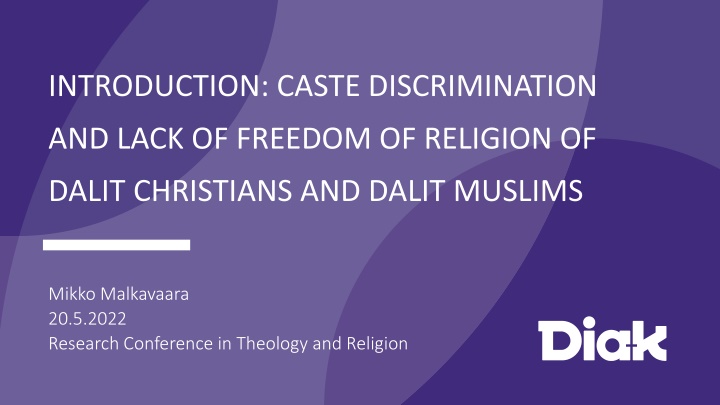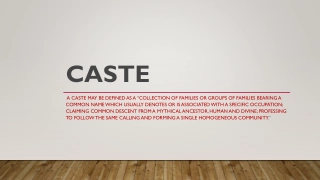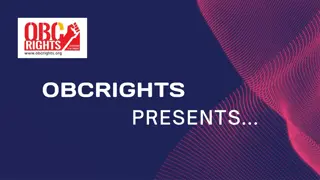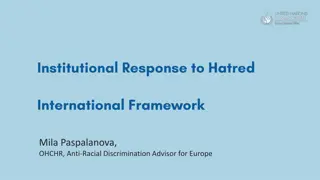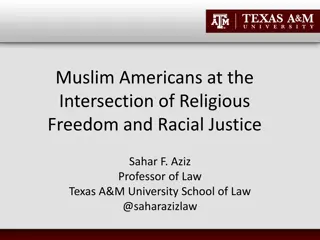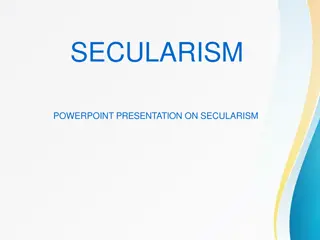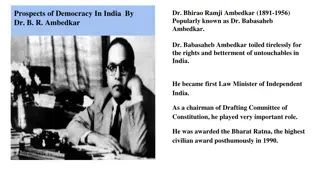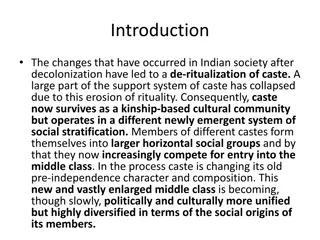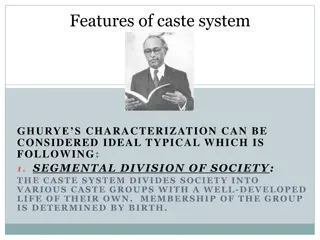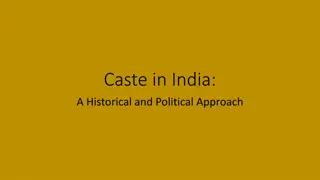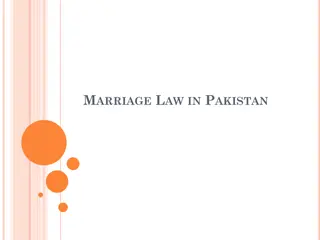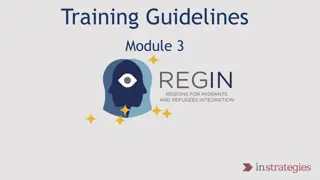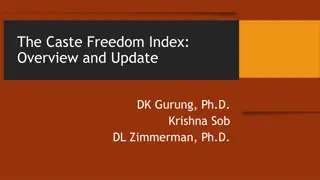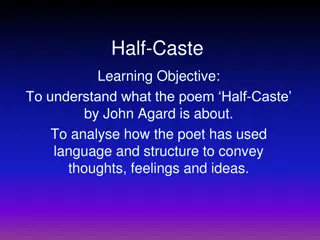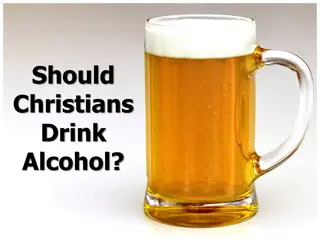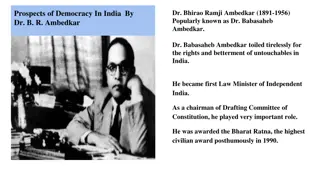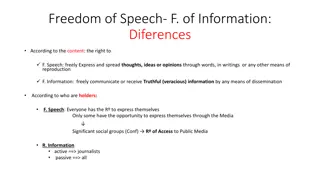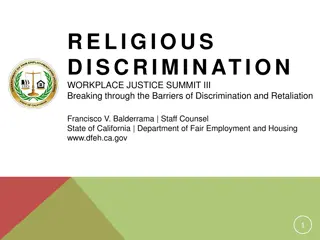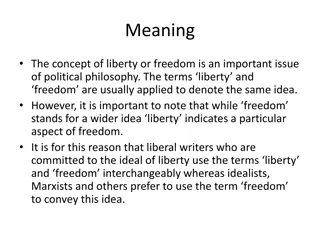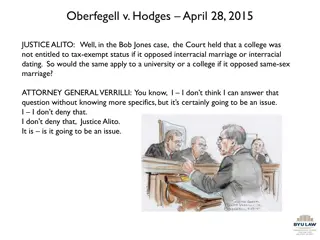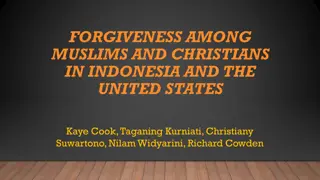Caste Discrimination and Lack of Religious Freedom Among Dalit Christians and Dalit Muslims
This research conference delves into the issues of caste discrimination and limited freedom of religion faced by Dalit Christians and Dalit Muslims in India. It explores the historical and social context, theological influences, and the significance of counter theology in addressing these systemic injustices.
Download Presentation

Please find below an Image/Link to download the presentation.
The content on the website is provided AS IS for your information and personal use only. It may not be sold, licensed, or shared on other websites without obtaining consent from the author.If you encounter any issues during the download, it is possible that the publisher has removed the file from their server.
You are allowed to download the files provided on this website for personal or commercial use, subject to the condition that they are used lawfully. All files are the property of their respective owners.
The content on the website is provided AS IS for your information and personal use only. It may not be sold, licensed, or shared on other websites without obtaining consent from the author.
E N D
Presentation Transcript
INTRODUCTION: CASTE DISCRIMINATION AND LACK OF FREEDOM OF RELIGION OF DALIT CHRISTIANS AND DALIT MUSLIMS Mikko Malkavaara 20.5.2022 Research Conference in Theology and Religion
Purpose of this introduction 1 2 3 Explain concepts Clarify problems we are dealing with in this session Give background information of the social and legislative conditions in India
Contextual theology Liberation theology Dalit Theology Influence of Black theology Identity theology Counter theology
WHY COUNTER THEOLOGY?
First used by Jyotirao Phule in the 19thcentury Came in general use since the 1970s Meanings: crushed, broken Dalit is a collective name that replaced names like casteless , outcaste , untouchable , or Harijan , or specific caste-names like Pariah Gandhi favoured the word Harijan, but now it is considered condescending and offensive Ambedkar used the word untouchable The word Dalit
Caste system Four varnas: the Brahmins (priests) on the top, the Kshatriyas (rulers and warriors) and the Vaishyas (merchants) next The Shudras (the labourers) are the working majority. The Dalits
The varnas are more theoretical and the language of the Hindu religion. Jatis are everyday life. Jatis can be understood subcastes. Every person belongs to one jati from birth to death and everyone is expected to marry within one s own jati. There are hundreds, maybe a couple of thousand jatis in India. Many of them are big with millions of members, some are smaller. Jatis or the jati system
1) Caste hierarchy, Brahmins on the top, 2) Separation between the highest castes and the Shudras. By Hindu religion the Brahmins, the Kshatriyas and the Vaishyas are twice-born and ritually pure. 3) Shudras (majority of the population) are ritually suspect and socio-economically dominated. 4) Dalits are outside and below this four-fold Indian caste society. They have been considered sub-human or non-human, and they have a permanent stain to be ritually impure. Common factors
Untouchability and ritual impurity Practices are forbidden by law, but anyhow: Humiliation, the higher ones show their superiority Dalits are not entitled to use same water source with the caste people They have no right to walk freely in the village but only when they are there for duty They don t have a permit to enter temples or public buildings In the teashops they are served outside the building, and they must wash their dishes themselves Difficulties in the schools Dalit and others eat their lunch separately.
Human Rights Watch report 1999: Dalits are discriminated against, denied access to land, forced to work in degrading conditions, and routinely abused at the hands of the police and of higher-caste that enjoy the State s protection. In what has been called hidden apartheid entire villages in many Indian states remain completely segregated by caste.
The ruling Hindu nationalist party (BJP) favors Hindutva and caste discrimination Hindutva means the state or quality of being Hindu, Hinduness . Hindutva is a concept of "Indian cultural, national, and religious identity". Hindutva Hindutva movement represents national right-wing extremism whose goal is to achieve cultural hegemony in India and homogenize the whole country. Encyclopedia of Hinduism, Hindutva is the "culture of the Hindu race", and "Hindu dharma is a religion practiced by Hindus as well as Sikhs and Buddhists". Purpose: to construct a collective identity to support unity of Hindus and to avoid too narrow a definition of Hinduism. It is easy to perceive that the Muslims and the Christians are outsiders, they do not belong to the entirety in the society.
India is a land of diversity. It is known for lingual, ethnic, cultural, and racial diversity. Many religions, hundreds of castes and caste groups. India: a deeply divided society. It has deep-rooted caste and other identity divisions in every village. Social hierarchies, brutal practices, the worst of them being untouchability. Communalism has its roots in the religious and cultural diversity of India. Communalism Political propaganda tool to create divisions, differences and tensions between the communities based on religious and ethnic identity leading to communal hatred and violence. Communalism is an ideology that, to unify the community, suppresses distinctions within the community and emphasizes the essential unity of the community against other communities.
Is Communalism as phenomenom old or new? Some say, communalism in India is a modern phenomenon. On the other hand, it can be said that communalism has flourished in India since ancient times. Communalism is a term used to denote attempts to construct religious or ethnic identity, incite strife between people identified as different communities, and to stimulate communal violence between those groups. It derives from history, differences in beliefs, and tensions between the communities. Communal conflicts between religious communities in India, especially Hindus and Muslims have occurred since the period of British colonial rule.
Communalism promotes intolerance and hatred of other religions and thus, divides the society. Muslim communities have often been targets of violent attacks and attacks by terrorist Hindu nationalists. Previously, these attacks were considered communal violence and identified as a communal conflict between Hindu and Muslim communities. Communal attacks against Muslims Since the Hindu Nationalist BJP came to power, Muslims in India have felt threatened, and the situation is the worst it has ever been. criminalized. Muslim women are being ridiculed and harassed simply for being Muslim. Muslim livelihoods are in jeopardy. There are calls for the extermination of Muslims. In BJP-ruled India, it is no longer safe to be Muslim.
Article 15 of the Constitution of India prohibits discrimination based on caste. Article 17 declares the practice of untouchability to be illegal in India. Article 29 guarantees protection of interests of minorities. Constitution of India Constitution was adopted in November 1949, and it came into force on 26th January 1950. Dr. Ambedkar, himself a Dalit, was the Minister of Justice at that time and he led the committee which prepared the proposal for the new Constitution.
Amendment to the Constitution concerning caste However, already the next year, in 1951, the parliament decided of an Amendment to the Constitution. It sought to qualify fundamental rights. At the heart of the Amendment was conflict over caste-based reservations in education. The Amendment concerned Articles 15 and 29. The first amendment specified that nothing contained in Articles 15 or 29 would stop the Government from making special provisions for the advancement of socially and educationally backward classes, as well as SC/ST groups.
Amendment launches a complicated system of reservations The parliament recognized the existence of caste system. The Amendment included more than one thousand caste names of Dalit jatis and other backward groups Indian government officially recognizes historically discriminated communities of India such as the untouchables under the designation of Scheduled Castes and Scheduled Tribes, and certain economically backward Shudra castes of whom the term Other Backward Class is used officially.
The reservation system has existed for over 70 years The reservation system means positive discrimination for Scheduled Castes and Scheduled Tribes and OBCs (Other Backward Classes). It levels possibilities for education, public jobs, and social allowances for those who without quotas of reservations would ever get any chance for this. Private sector has not been very big in India. Public sector jobs have dominated. One million young Indians coming to the labour market every month. Reservations are important in this and in education, too. With help of reservations there are nowadays many well-educated Dalits who live middle-class life.
What is the problem? The reservations are not given to the Dalit Muslims and the Dalit Christians. First, the reservations were for Hindus only, then later, to the Sikhs and the Buddhist, too. Some quite well-to-do Shudra caste groups have fought hard to get them to the OBC (Other Backward Class) list. The treatment to the Dalit Christians and the Dalit Muslims has not been equal compared with the other big religious groups. Christians and Muslims do not get the same possibilities than the others.
Therefore, in this workshop we ask: Do Dalit Christians and Dalit Muslims have Freedom of Religion in India?
